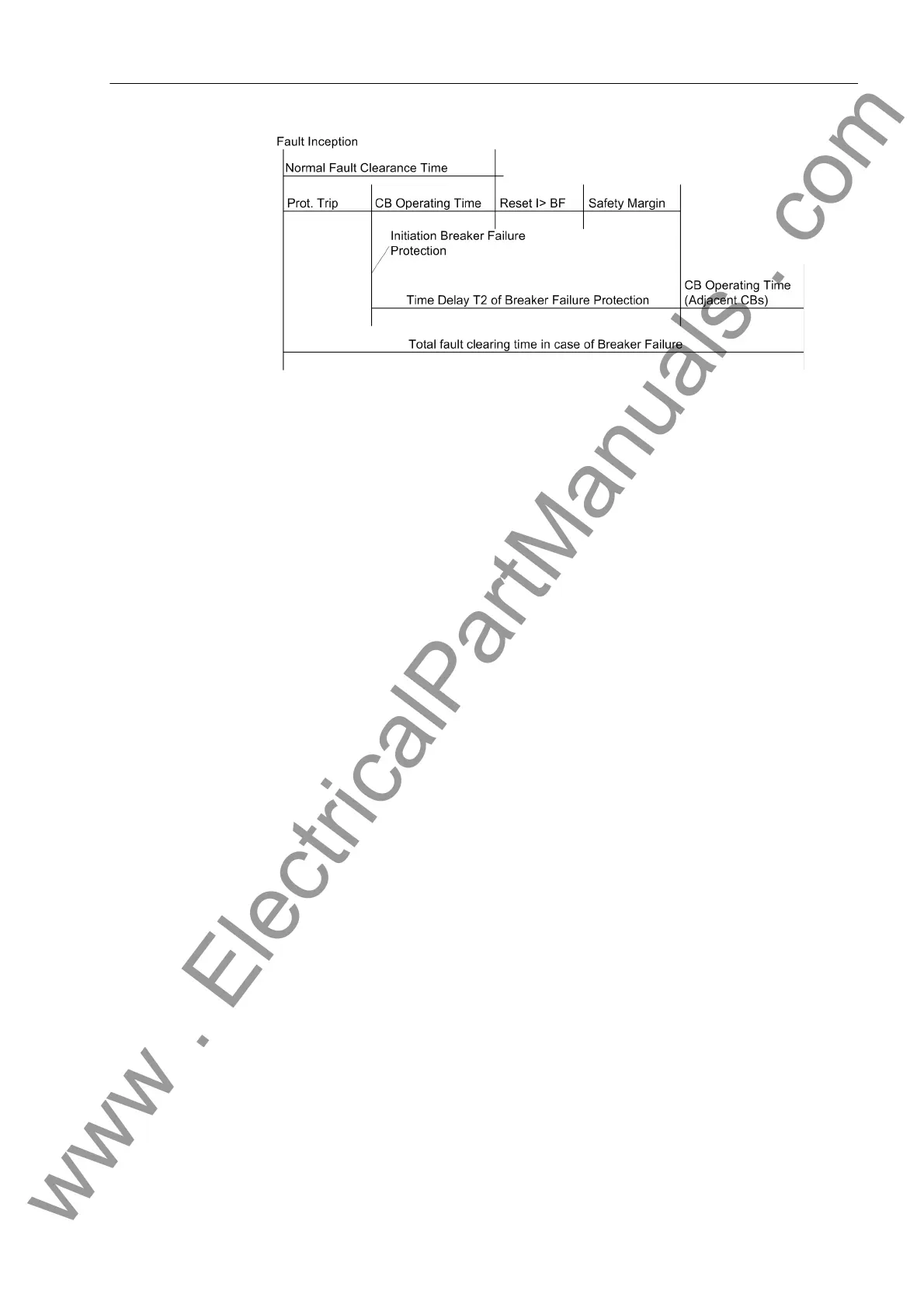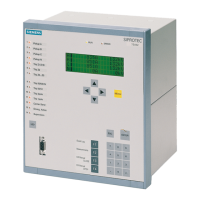2.13 Circuit Breaker Failure Protection
191
7SD610 Manual
C53000-G1176-C145-4
Figure 2-78 Time sequence example for normal clearance of a fault, and with circuit breaker
failure, using single-stage breaker failure protection
Circuit breaker not
operational
If the circuit breaker associated with the feeder is not operational (e.g. control voltage
failure or air pressure failure), it is apparent that the local breaker cannot clear the
fault. If the relay is informed about this disturbance (via the binary input „>CB
faulty“), the adjacent circuit breakers (busbar and remote end if applicable) are
tripped after the time T3-BkrDefective (address 3907) which is usually set to 0.
Address 3908 Trip BkrDefect. determines to which output the trip command is
routed in the event that the breaker is not operational when a feeder protection trip
occurs. Select that output which is used to trip the adjacent breakers (bus-bar trip).
End fault protection The end fault protection can be switched separately ON or OFF in address 3921 End
Flt. stage. An end fault is a short-circuit between the circuit breaker and the current
transformer set of the feeder. The end fault protection presumes that the device is in-
formed about the circuit breaker position via breaker auxiliary contacts connected to
binary inputs.
If, during an end fault, the circuit breaker is tripped by a reverse stage of the feeder
protection or by the busbar protection (the fault is a busbar fault as determined from
the location of the current transformers), the fault current will continue to flow, because
the fault is fed from the remote end of the feeder circuit.
The time T-EndFault (address 3922) is started when, during the time of pickup con-
dition of the feeder protection, the circuit breaker auxiliary contacts indicate open poles
and, at the same time, current flow is still detected (address 3902). The trip command
of the end fault protection is intended for the transmission of an intertrip signal to the
remote end circuit breaker.
Thus, the delay time must be set so that it can bridge out short transient apparent end
fault conditions which may occur during switching of the breaker.
Pole discrepancy
supervision
In address 3931 PoleDiscrepancy (pole discrepancy protection), the pole discrep-
ancy supervision can be switched separately ON or OFF. It is only useful if the breaker
poles can be operated individually. It avoids that only one or two poles of the local
breaker are open continuously. It has to be provided that either the auxiliary contacts
of each pole or the series connection of the NO auxiliary contacts and the series con-
nection of the NC auxiliary contacts are connected to the device's binary inputs. If
these conditions are not fulfilled, switch address 3931 OFF.
The delay time T-PoleDiscrep. (address 3932) indicates how long a breaker pole
discrepancy condition of the feeder circuit breaker, i.e. only one or two poles open,
www . ElectricalPartManuals . com

